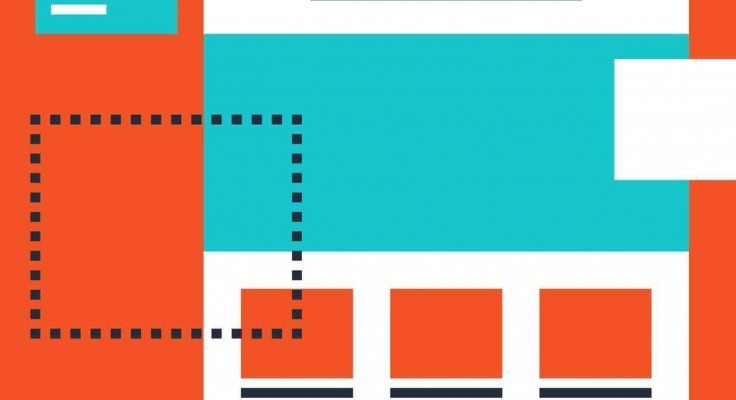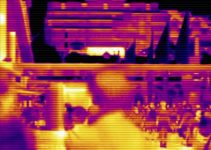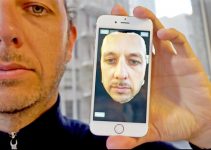7 Things To Focus On If You Want A High-Converting Landing Page
Home pages during the early Internet days looked like a huge mess.
It was text-heavy, organized, yet not at all eye-catching or attention-grabbing.
These websites looked like a sight for sore eyes.
During the time, for the tech-savvy, the Internet was a place of information where aesthetics didn’t matter too much.
High-converting custom landing page concepts were still foreign during the time.
It was not until Web 2.0 veteran marketers and web designers created improvements on home pages.
Landing pages are crucial parts of sales funnels.
You can think of them as entrance doors to your office or promo center. They need to grab attention.
Everything must be accessible for customers easily.
Lastly, you need to guide customer attention to areas that highlight your brand and make the entire experience memorable through excitement, surprises, or bonuses.
The usefulness of high-converting custom landing pages is indispensable.
A case study by Optimizely on power tools and equipment manufacturer and distributor DeWalt’s landing page revealed that even the smallest changes, such as a phrase or color of a call-to-action (CTA) button, can increase landing page conversion rates.
Therefore, it is not enough that landing pages provide relevant brand offer information.
It must make the experience easy to understand (which simpler phrases and optimized CTA buttons can potentially achieve) and draw target visitors to generate leads or even immediate conversions.
Landing pages can also generate email newsletter subscribers to help generate leads and further push customers into purchasing the items on offer.
Common Errors
An emphasis on simplicity and an uncluttered landing page aesthetic is truly important.
One optimization study by ConversionXL on TruckersReport’s landing page shows that fewer steps can be the key to improving a landing page’s conversion rates.
However, ConversionXL did not merely change phrases or minimize the steps at once.
In the case study, they created an online survey to understand the site’s primary audience: truck drivers.
Upon understanding the devices used, images, headlines, text, content, and other aspects favored by truck drivers, they created a landing page with fewer form fields, a straightforward headline, and a shorter page.
Simply put, the study shows that a minimalistic approach can be effective (especially those who access sites using mobile devices).
However, given the audience prefers a business-formal language, the straightforward no-nonsense approach might not work for sites targeting millennials, creatives, or charity organizations.
From their case study, it is clear that landing pages have to deliver their message correctly.
Continuous landing page testing can help uncover the hiccups and common errors that limit a landing page’s potential.
Should You Hire a Professional?
Web designers you may task for landing page creation do have knowledge in optimizing the audience’s initial experience.
Unfortunately, designers have different design preferences.
For most of them, thee page look amazing and beautiful.
However, their designs might appear informal for a commercial or industrial business.
Even if you put yourself in the shoes of your audience to identify catchy headlines and powerful imagery to optimize conversion rates, it takes time to create surveys and perform the necessary tests involved to help it improve.
Aside from on-page optimization on phrases and CTA, behind-the-scenes search engine optimization such as HTML code cleanups and embedding certain codes to send the right signals to search engine algorithms take time to study and implement on your own.
Outsourcing your page’s design to professional digital marketing companies helps you save more time and resources compared to doing it by yourself or leaving it to your web designer.
Given their knowledge and experience with case studies that helped former clients having skyrocketing landing page conversion rates, the amount you pay them is definitely worth every cent.
However, it is vital to know the landing page sections and practices that are most important to use for quick marketing campaign ROI. Here they are.
Seven Sections to Concentrate Efforts
1. Truly Attention-Grabbing Headlines
When clickbait headlines took social media by storm, many people and marketers became angry.
The promised content was not as “epic” or “unbelievable” as the headlines claimed.
A landing page’s headline must never exaggerate something it can never truly deliver.
Clickbait headlines had drowned top-level brands and pages because of poor conversions caused by audience distrust.
One great way to write attention-grabbing headlines is to get inside the target audience’s head.
In the book “Cashvertising” by Drew Eric Whitman, he created a list of every human’s desire he called the “Life-Force Eight.”
The list contained the following:
- Survival, enjoyment of life, life extension
- Enjoyment of food and beverages
- Freedom from fear, pain, and danger
- Sexual companionship
- Comfortable living conditions
- To be superior, winning, keeping up with the Joneses
- Care and protection of loved ones
- Social approval
Going back on ConversionXL’s case study, TruckersReport needed a better headline than the one it was using.
It used the following headline: “Truck Drivers Needed ASAP.”
It is straightforward and urgent, which can grab anyone’s attention.
However, it lacked the emphasis on the reason the site needed truck drivers.
Even if you can deduce it that they need drivers for jobs, it still lacks the human factor that emphasis any of the Life-Force Eight.
Having created surveys for other headlines, ConversionXL found that their initial modification “Get a truck driving job with better pay” generated more leads than ever.
It is straightforward, but it highlights any truck driver’s biggest concern: will signing up for the service give me better chances or pay (comfortable living conditions)?
Every brand’s offer, ideas, and marketing campaigns are built on each of these eight else they will not generate consumer interest.
Therefore, headlines must contain and emphasize these human needs or desires with the right words.
2. Call-to-Action Messages and Objects
Writing headlines and call-to-action messages are different.
CTA development concentrates on a person’s tendency to act almost without any thought.
For example, Evernote’s slogan “Get organized. Work smarter. Remember everything (Life Force Eight’s “comfortable living conditions” and “need to be superior.”)” makes you interested in the platform’s capability to truly make your workflow easier through notes.
So you scroll down their landing page to know more about it.
Meanwhile, people tend to stop and give themselves a few seconds before opting for an offer.
Some landing page optimizers found color and form psychology to be useful in improving CTA offer button clicks when coupled with efficient messages.
One great example is Humboldt County’s Tourism website.
Coupled with an amazing first-person full-screen video, the CTA button that has a rabbit icon that states “Follow the Magic” creates curiosity while making audiences feel they are about to embark on a great adventure (Life-Force Eight: Enjoyment of Life).
3. High-Quality and Well-Optimized Images
Native advertising helps audiences access your content easier because it appears similar to the publisher’s past works.
The aesthetic and compositional coherence makes it convenient and ensures brand comprehension for both publisher and sponsor.
Landing pages work in a similar manner with images. The visual content must complement or improve the overall landing page composition.
Using high-quality images is a given for this task.
However, optimizing the image to load fast and appear correctly and accurate on any device screen is important.
Unfortunately, it takes some multiple display tests to nail this correctly.
However, for everything else, it needs to create a common ground with the viewer.
An image that shows the brand’s offer in action with a person who looks truly satisfied or comfortable using the product often grabs attention.
You will also need to think of the audience’s viewing pattern to place elements that can help urge them to know more about the offer.
In some cases, emotional and spectacular photographs and visual creative works are also helpful in grabbing attention and brand retention.
4. A Minimalistic Yet Creative Approach
Returning to the tests performed by Optimizely for DeWalt and ConversionXL fo TruckersReport’s respective landing pages, adding only the most necessary details in your landing pages is important.
However, this is not just to use a white landing page background to highlight elements.
It is adding the company’s personality to the overall page aesthetic that makes it memorable yet creative.
Kissmetric’s single-scroll landing page is a good example on minimalistic design.
Each message appears in intervals that appear pleasing to the eye.
It poses its slogan to “Get, keep and grow more customers” while using a CTA button that serves as a tool that measures the client’s site performance and possible ways it can improve.
Another slogan appears underneath.
This time, it elaborates on the platform’s offers and conveniences for would-be users.
Kissmetric’s landing page is minimal with only a single image that shows an urban setting in a colorful manner.
The symbols and messages tell the rest of the story, achieving a simple, easy-to-understand, yet coherent landing page.
5. A/B Testing
A/B tests have produced countless high-converting custom landing pages.
Even with only a single variation, the site traffic’s amount shows accurate and easy-to-implement responses with a greater sample size.
However, these self-implemented case studies aren’t perfect, but the data you gather can tell you a story. Concentrating on an A/B test helps you find the strengths and weakness of your landing page.
Optimizely’s work on DeWalt’s landing page involved using changing several elements of their landing page.
Delivering the correct message from “Buy Now” to “Shop Now” allowed their site to create 17% more in conversions. Optimizely estimated it to be a six-figure raise all for a simple A/B test.
In addition, A/B tests are affordable each time. You also have a better sample size compared to multivariate testing.
However, it limits the variation number and does not guarantee that the design’s appeal will be consistent each time.
6. Multivariate Testing
Multivariate testing involves using different landing page design and elemental variants to find the one that will most suit your brand.
If you have multiple designs and mixed responses make it difficult to decide, then a multivariate test is in order.
For example, ConversionXL’s TruckersReport Landing Page case study used four variants of the site’s headline.
It also used multiple variants of the landing page design and collected responses for all the new designs.
The implementations showed progress even with just one or two more design variations.
Multivariate testing’s only downfall is the sample size.
With multiple site styles to test, it will take time and resources.
It will also divide customer attention, which can affect your brand in different ways you might not expect.
However, if you manage to use it especially to achieve your objective of a high-converting custom landing page, then multivariate tests will truly be useful for you.
7. Well-Designed Sales Funnel
An excellent sales funnel can create conversions automatically.
It also has trackers and other pixels making it convenient to collect data for future adjustments and evaluation.
Your sales funnel begins from — and is widest at — your landing page.
Therefore, a good landing page’s design can lead to multiple pages.
For example, Wistia’s landing page design just asks for your first and last name, your email, and a password for your account.
It appears in a pleasing manner that it just “up-sold” the site through registration convenience.
You will then receive an email that will ask more questions to complete your personal identification.
Wistia is a free website builder.
Therefore, you can build your website with great-to-use tools.
But some users will definitely need variety or want to own their own domain.
In this light, Wistia will introduce their packages.
After having seen the site builder’s potential to unleash the designer’s capabilites, they “convert.”
However, before they do, the site shows a “bundle” that allows them to get a premium service less than its actual price upon signing up (up-sell).
Down-selling is also a well-designed sales funnel’s important component.
In some cases, customers might find it more attractive to just buy the basic product and receive the add-ons in the near future upon their choosing.
Giving them these options guarantees accessibility, just make sure the bonuses or down-selling will not affect your profit milestones.
Conclusion
High-converting landing pages need not bait their readers to access their content.
The product, the content itself, should provide great value and easy navigation.
A pleasant experience along with value imparted to an audience makes an excellent high-converting landing page.



